What’s the best travel camera on the market? We talk compact mirrorless cameras compared to chunky DSLR’s – we’ll talk you through the pro’s, con’s and our favourites.
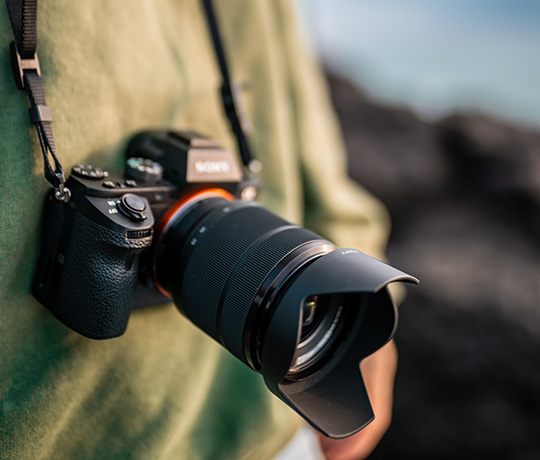
Why you should be documenting your travels with a decent camera
It’s your first time in a new city. Whether you’re just visiting or have newly relocated for study, if you’re anything like me you just can’t wait to explore – but first you need to know the best travel camera to take with you.
As a photographer, my favourite way to explore my new surroundings is with a trusty camera in hand. There are a few reasons for this. First, it gives my wondering-around-town more of a focus. Having to think about what images I’m creating makes me pay more attention to the scenery and I find helps me take in more of it. The best travel camera is one that’s light, takes good quality photos and is easy to use.
Secondly, I’m creating images to share my experience with friends and family via social media. This actually helps me stay connected to those I love at home. It helps me document and process my new experiences and include those I’ve left behind on the discovery process with me.
Finally, being in a new city you tend to have more time on your hands before you build your friendship networks. So use this quieter time to explore and develop your photography skills, before you’re distracted by your new social calendar. A win-win.
When I first moved to London to study, I found that planning my exploration of the city around photos I wanted to capture helped give me some structure and prioritise all the beautiful places to go.
For the first year, I never went anywhere without my DSLR. And years later I’m still going back to those photos.
Today, technology has moved on and bulky DSLR cameras are no longer the only option if you’re looking for a great travel camera.
Drawbacks of a DSLR Camera
DSLR cameras used to be the gold standard when people were looking for a “good” camera. DSLR (short for Digital Single-Lens Camera). Going back even further, SLR cameras, allowed the photographer to see exactly what the camera sensor sees when composing the image. This system of mirrors would reflect what the lens saw up to the viewfinder, and retract when the shutter was pressed to allow the image to be developed on the sensor (or film).
This what-you-see-is-what-you-get approach means that photographers were able to play with aperture and shutter speed to create interesting creative effects without having to wait till the film was developed to see the results. This made it ideal for travel photography because when you’re out in a new location or a day trip, there’s not many opportunities to go back from a re-shoot if the image didn’t turn out the way you hoped.
Unfortunately this system overall is pretty bulky; DSLRs also came with interchangeable lenses. Which gave the system its flexibility and creative control. But often meant you had to carry several lens to cover a range of occasions; such as street photography vs landscape photography vs portrait photography. It also means that often, they’re not the best travel camera – especially for beginners.
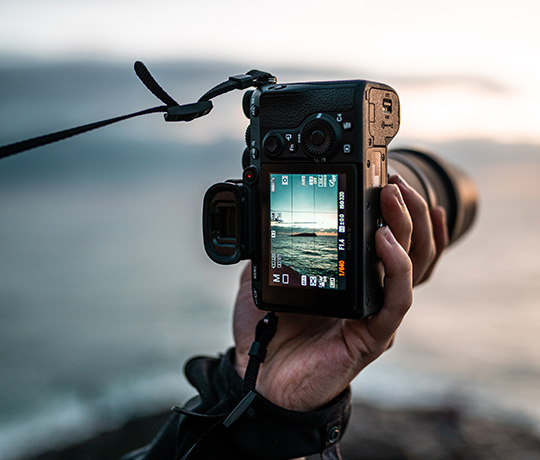
Are Mirrorless Camera’s Better Than DSLR’s?
In the last decade, a new system called mirrorless or “micro four-thirds” was introduced. As digital sensors became more advanced, it as no longer necessary to have the mirror mechanic to reflect the image up into a viewfinder. Instead, an electronic viewfinder (often abbreviated as EVF) was able to give real-time feedback on what the sensor was seeing. This step-change in technology allowed camera bodies – and correspondingly, lens – to become much smaller without sacrificing quality.
As the old adage goes, the best camera is the camera you have with you. So the smaller and more compact the camera is, the more likely you’ll have it with you and actually use it to take shots. Compact cameras are great for happy snaps. But in the last few years, mirrorless cameras have really taken off. Bringing down the price while driving up the quality and capability of these cameras.
Let’s take a look at some of the advantages of a mirrorless camera over a traditional DSLR camera for comparison.
Mirrorless cameras are much smaller than their DSLR counterparts
The most obvious advantage of a mirrorless camera is that it is much smaller than a DSLR. For comparison, the Canon EOS-M range is typically 112.0 x 68.0 x 44.5mm and weighs just 390g, whereas the Canon EOS 129 x 102 x 77 mm and almost 500g in weight.
Add to that the size of the lens which is typically about 2/3 of the size. A mirrorless system takes up just a fraction of the room in your luggage or day bag. This means you’re more likely to carry it with you, for longer periods of time. Therefore more likely to use it whilst travelling and capture beautiful photos.
Image stabilisation is generally better in a mirrorless camera
This is key, especially if you’re taking photos on a tour bus or photographing wildlife that generally doesn’t like to stand still. Of which Australia has its fair share. With less moving parts, mirrorless cameras tend to have better image stabilisation. This means you’ll have crisper photos and can avoid ruining a photo due to camera shake (which I’m terrible at!).
Image quality in a mid-range mirrorless system can rival more-expensive DSLRs
Because of the rise in popularity of mirrorless systems, camera manufacturers are pouring more innovation and research efforts into the technology. This means that today, even mid-range mirrorless cameras provide extraordinary image quality.
This is especially so for uses like travel photography. Full-frame DSLRs still reign supreme when it comes to high-quality photography needs like studio shoots or editorial/fashion photography. But if you’re using it for everyday – and even landscape – photography, you get plenty of bang for your buck (always useful on a student budget) with a mid-tier mirrorless system already.
Mirrorless cameras are quieter
With no mirror flicking up and down in front of the sensor, operating a mirrorless camera is much quieter than a DSLR.
For occasions like street photography or even macro and nature photography, you can now shoot virtually unnoticed. Which means you’re more likely to get authentic street photography and less likely to scare away subjects like wild animals. If you dare get close!
Videos are much easier to shoot on a mirrorless camera
For travellers or bloggers and influencers who like to use video to document their adventures. Mirrorless cameras tend to be far better than DSLRs.
Not only are mirrorless cameras built with video functionality in mind, features like a real-time sensor image display (either via EVF or a display). This allows you to see what you’re filming much easier. The lightweight design and smaller lenses make hand-holding a mirrorless camera much easier than DSLR when you’re shooting.
Mirrorless cameras have better autofocus
Since the image on the sensor can be analysed in real-time by software, mirrorless cameras tend to have superior autofocus. This is especially pronounced and useful for video shooting.
There are also more advanced autofocus modes like subject-tracking that isn’t as feasible in DSLR models. So if you like to create videos of your travels, this feature alone makes for a great argument for ditching the DSLRs.
Wireless Wifi transfers to your phone or laptop
This was a home-run for me. Mirrorless cameras – being newer – tend to have wifi transfer as default. This means that the camera itself can create a wifi field to wirelessly beam your photos onto your phone or laptop via an app.
This is fantastic for creating content to share via social media with your friends and family. And especially handy when you’re on the road. Who has time to whip out the computer, take out the SD card from the camera and wait for it all to transfer before posting it on Instagram?
Many models also allow remote-control functions with a paired app. Especially useful if you’re travelling alone, this means you can set your camera somewhere while you use your phone app to trigger the shutter and/or see line up the shot because you can remotely see what the sensor sees. Pretty neat!
Mirrorless cameras are the future, but do they make the best travel camera?
Because of all the positive points covered above, mirrorless cameras have exploded in popularity in the last few years. This means that the big camera brands are investing more time developing the technology and driving innovation to compete for consumers’ dollars.
In the last few years, we’ve already seen the number of lenses and systems available on mirrorless grow, and it continues to expand. Now, even the mid-range mirrorless models can match or beat the best DSLRs for features and performance.
In particular, though there are still more lens options for traditional DSLR bodies, the number of options are increasing every day. Because mirrorless cameras are built for portability, I’ve found that there are better all-purpose zoom lenses available for mirrorless cameras than for DSLRs. And for travel photographers, it’s better to have a lens you like that covers 80% of the photographic scenarios you’ll need rather than carrying many prime (fixed) lenses that you need to change every time you have a different shot in mind.
5 of the best mirrorless cameras to travel with
With mirrorless cameras becoming more and more popular, there are currently lots of great choices. To help you decide, it’s important to first know what your budget is – you can almost spend as much or as little as you want on mirrorless cameras. My advice is to find a camera body you can easily navigate the buttons of and you like the look of, and invest your money on a good lens instead.
When buying a mirrorless camera, think of it as buying into a system, not just a camera. So do your research around the type of photography you’re likely most gravitate towards. Do you like street photography? Or you’re more a landscape enthusiast when you’re travelling? Would you more likely photograph micro wildlife or a beautiful local dish?
Once you know, take a look at the range of lenses available for that system (eg. Canon or Olympus). Do the available lenses suit you? Does one have better telephoto lenses – lenses that have a variety of focal lengths? Or even better – prime lenses – fixed focal lengths – that you’re most likely to use?
To help you get started, here are 5 of my favourite mirrorless cameras right now to spark some ideas. Whilst we can’t advise which one is the best travel camera for your needs, we can give an overview of their strengths, weaknesses and features.
#1 Olympus OM-D E-M10 Mark IV (~$1,200 AUD)
The Olympus range is one that started it all for me. The M10 is the entry-level model of the range, but already packs a lot of features in a small package. It’s also beautiful to look at and lightweight compared to other competitors. Plus for me, the Olympus micro-four-thirds lens range has the best selection and price range for the lens I’m most likely to use. You can’t go wrong with this option.
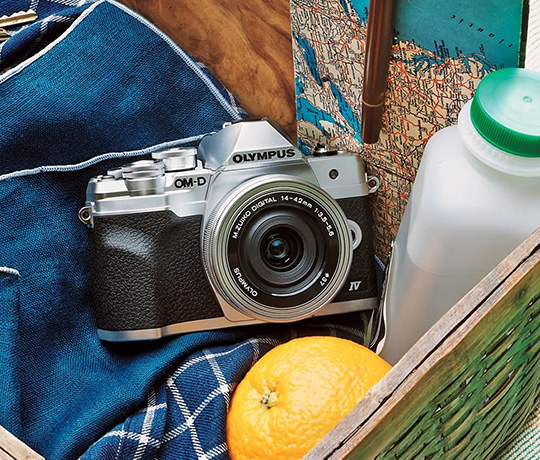
#2 Canon EOS RP (~$1,600 AUD)
One of the big-two brands, Canon is king for a reason. Though they’re a little slower to the mirrorless market, the EOS-RP range packs a full-frame sensor into the mirrorless size. Canon’s lens system is famous for its quality too so if you’re looking for premium quality, this is my pick.
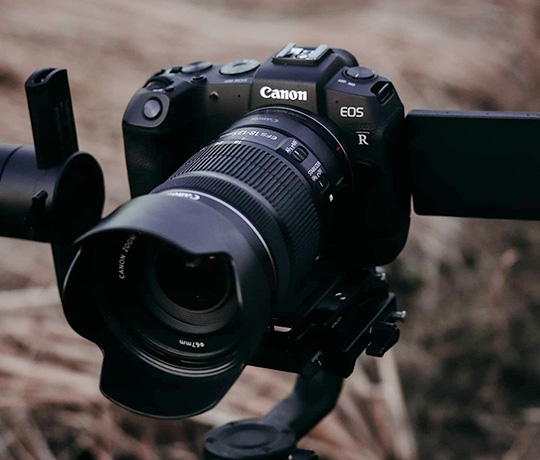
#3 Nikon Z50 (~$1,600 AUD)
Woolworths vs Coles, Myer vs David Jones, Kmart vs Target… everyone always has a preference and when it comes down to it, the difference is often more emotional than rational. To me, that’s the same between the rivalry of Canon vs Nikon. I’m a Canon guy because that was my first DSLR, while my partner prefers Nikon for the same reason. The Z50 is Nikon’s answer to Canon’s EOS RP, and both have equally premium-quality build, specs and lens range. It really depends on your personal preference and button layout preference.
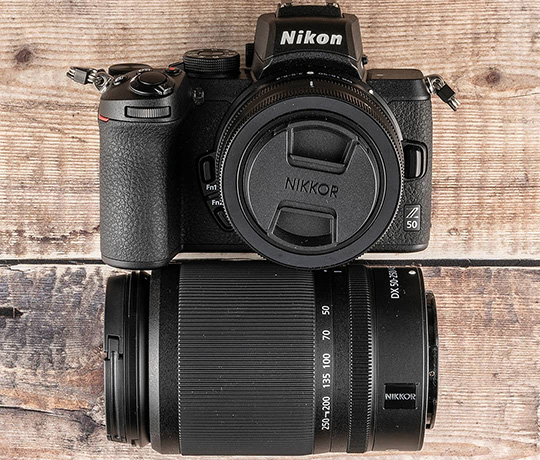
#4 Sony A6000 (~$800 AUD)
If you’re looking for great quality without the price tag, Sony is an excellent system to consider. Many camera enthusiasts believe that the Sony lenses are the best quality, and the alpha series is definitely seen as the market-leader in mirrorless technology. The A6000 is an excellent all-rounder with a solid camera build and is a great entry-level travel camera to get you familiar with a mirrorless system while still allowing room for progression though its range of lenses. A great first camera with room to develop with you!
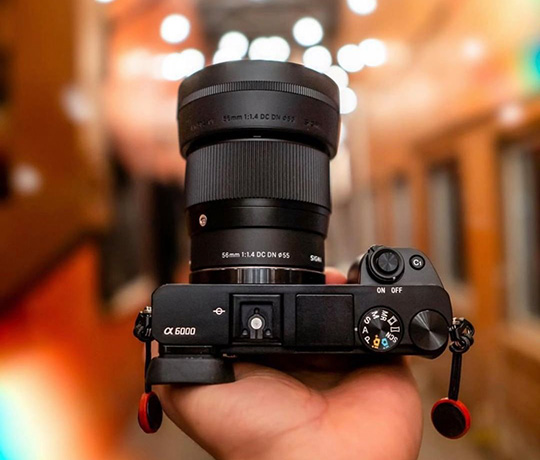
#5 FujiFilm X-S10 (~$1,600 AUD)
This camera is an excellent all-rounder, but particularly excels as a portable video camera. It captures stunning 4k quality images, as well as full-HD in a slow-mo function for beautiful living landscapes. It also has fantastic image stabilisation and great performance in low-light settings. Which is perfect for someone with shaky hands like me. If you like to capture more video than stills, this is an excellent option.
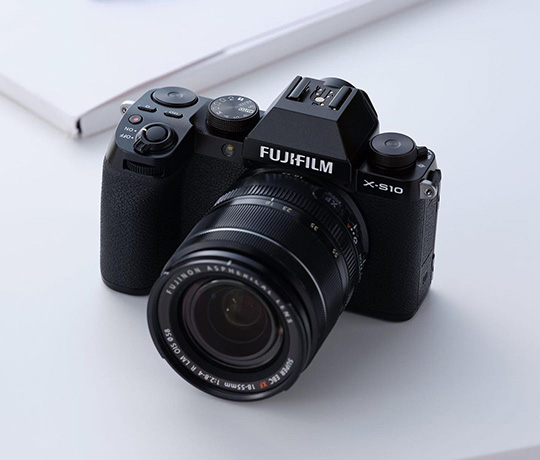
If you’re reading this as a beginner photographer and you’ve found the best travel camera, we highly recommend that you upskill through a course. There are heaps of free ones out there – you won’t regret it!
And now you’ve got your camera, why not check out the ultimate bucket list of places to go try it out?





















